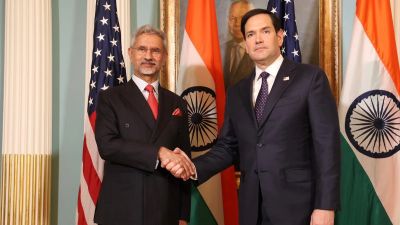In memoriam
In a caste of his ownWould Laloo Prasad Yadav have been around if M.N. Srinivas hadn't rediscovered the Indian caste system? For it was t...

In a caste of his own
Would Laloo Prasad Yadav have been around if M.N. Srinivas hadn’t rediscovered the Indian caste system? For it was thanks to Srinivas, who died earlier this week at the age of 83, that anthropologists moved away from the narrow study of tribal communities to caste. As Jayaprakash Narayan said, whichever political party a candidate claimed to represent, he really stood from his caste. When he chose caste as his theme in the 1957 address at the Indian Science Congress, it was not such a fact of life.
The modernist approach of Jawaharlal Nehru and the industrialising zeal he managed to propagate convinced people that traditional social categories no longer had any relevance. As he writes in D. School: Reflections on the Delhi School of Economics: “After I moved to Delhi I discovered to my surprise that caste was not mentioned in discussions among Westernised intellectuals, especially economists such as those who inhabited the DSE.”
It is in that context, and also in hisdevotion to village studies (best seen in his classic The Remembered Village), that Srinivas’ importance lay. Academics now who are only too willing to settle for sinecures would be appalled to know that in 1969, Indira Gandhi had offered Srinivas the post of secretary in the ministry of education, with two joint secretaries to help, and that he refused because he had no experience. But then times were simpler, people gentler and scholars actually scholarly. Just think, can this happen now? That Vice-Chancellor V.K.R.V. Rao could actually hire K.N. Raj as a professor though he had applied only for a readership?
Anyone who has studied at the Delhi School of Economics, particularly the less glamorous sibling sociology, has to be grateful to Srinivas. For he not only fought to have it taken seriously he was its only professor of sociology in the department for the first 10 years but he also taught most of the professors who made it the institution it became: Among them A.M. Shah, Andre Beteille and VeenaDas. He managed to hire the very talented J.P.S. Uberoi who had just done his PhD in Afghanistan for Pakistan studies, he started the system of tutorials (though there were times one didn’t feel too grateful at 8 a.m. on a winter morning for that), and he also promoted a BA (Honours) course for Miranda House and Hindu College.
For a generation of students who only got to hear him at seminars (he taught at D. School between 1959 and 1972), it was a loss not to be personally taught by him. But it is enough to read him. As he wrote in D. School: Reflections on the Delhi School of Economics: “When I returned from Oxford in 1951, I had a clear idea of the kind of sociology I should try to promote. I wanted students to be given a sound knowledge of the country’s basic institutions, such as village, kin, caste and religion, and the relation of these institutions to landownership and local power structure in the context of the vast changes that were taking place.”
The sociologist, he always maintained, neededthe skills of a novelist. He stressed the need for basic research, and was perhaps single-handedly responsible for making village studies not just a dreary collection of dry facts. He was proud of his students (“my own students were better trained in sociology than were most other scholars”) but he felt the administrative responsibilities at D. School were taking too much of his time. He recalls in his essay a little sadly how he didn’t want to fight for sociology anymore. At heart he always remained a scholar first and last.
Inaugurating buildings, writing reports and generating funds, things which entrepreneurial academics do now with such equanimity was something that disturbed his placid rhythm. He left Delhi for Bangalore in 1972, but always remained true to Milton Singer’s description of a typical Indian Brahmin: Clad in a shirt and dhoti, he could be both Westernised in his intellectual discipline (he drew his inspiration from Durkheim and Radcliffe-Brown) and true to his traditions in his personalregime.
Photos


- 01
- 02
- 03
- 04
- 05





























